A road known as the Million Dollar Highway sounds like it would be found in a place like Beverly Hills. Rodeo Drive, for instance, is a two-mile stretch of road that is known as one of the most expensive streets in the world. If you’re heading to this stretch of road for some retail therapy, you’d better have some seriously deep pockets! However, despite its ritzy name, the Million Dollar Highway is not found in Beverly Hills. It is located over 750 miles northeast of that famous 90210 zip code.
The Million Dollar Highway is located in western Colorado. This 25-mile stretch of mountain highway is one of the most breathtaking drives in the United States, but it is not for the faint-hearted. Let’s explore this fascinating roadway.
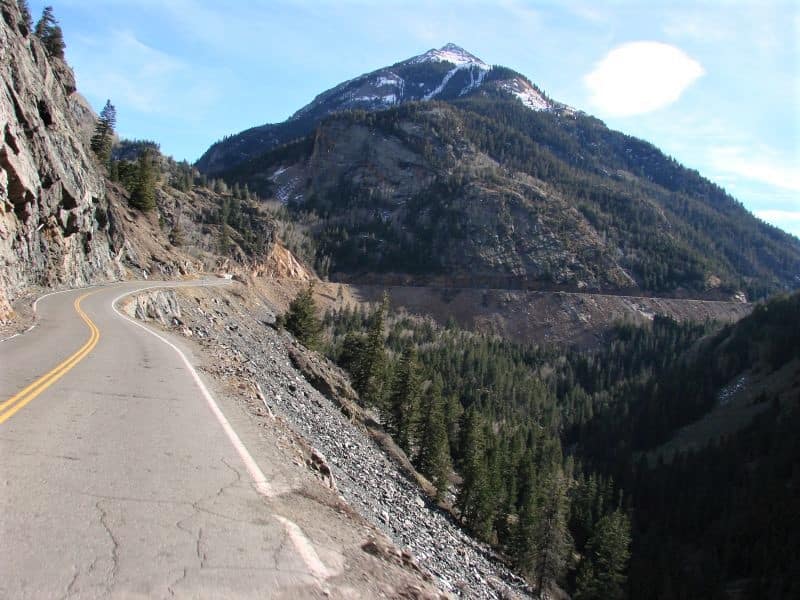
The Million Dollar Highway features amazing scenery, but the drive itself can be a white-knuckler!
The Million Dollar Highway
This stretch of road is part of U.S. Route 550, a 350-mile highway that extends from Bernalillo, New Mexico to Montrose, Colorado.
Most of Colorado’s portion of Route 550 is a two-lane highway through mountainous terrain. The 25-mile stretch between the small towns of Silverton and Ouray is the portion known as the Million Dollar Highway.
It is also part of a loop called the San Juan Skyway. This 235-mile scenic loop follows Routes 550, 62, 145, 184, and 160 through river valleys and along alpine peaks. The crown jewel of this loop is the Million Dollar Highway.
History of the Million Dollar Highway
This highway didn’t start as a highway at all. It began as a hand-carved road for miners and supplies to reach the Red Mountain Mining District. Otto Mears built the road and also collected tolls for its use. Mears was called the “Pathfinder of the San Juans.” He was famous for building roads through areas of the San Juan Mountains that were so rugged they were deemed impassable. That is precisely what Mears did when he built the road that would later become the Million Dollar Highway.
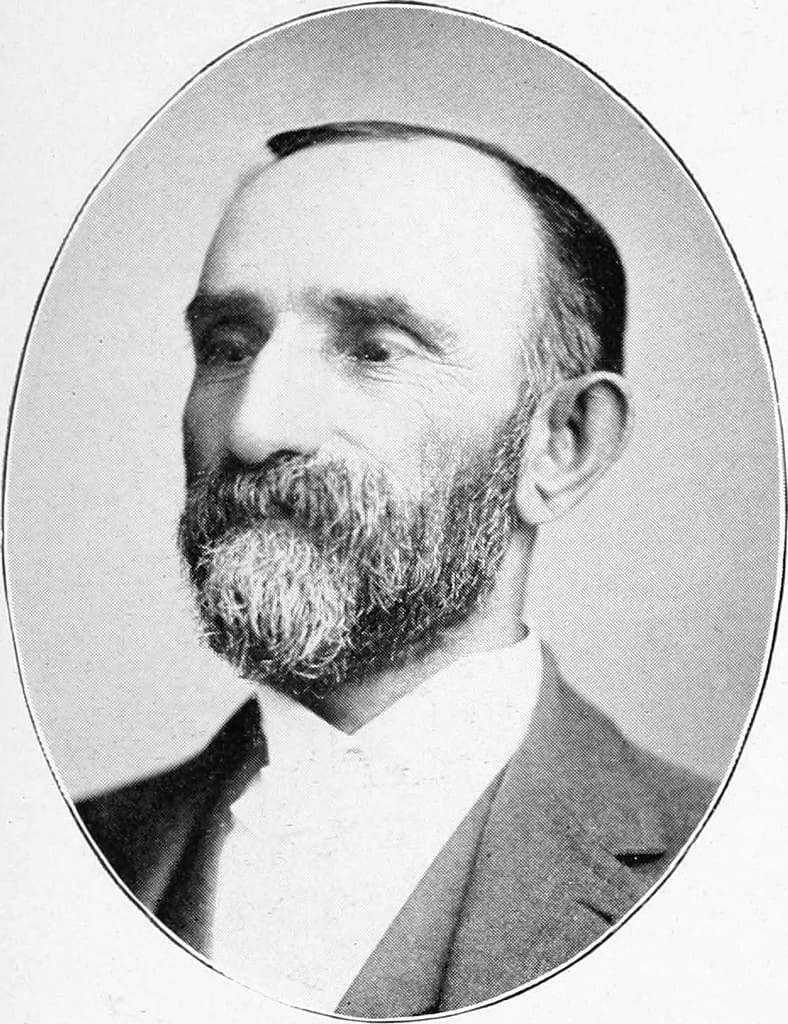
Otto Mears built roads through the mountains that many believed could never be built.
©Rowell Art Publishing Company / unknown photographer / Public domain – Original / License
With the discovery of gold and silver, mining roads were critical to cash in on the boom. County officials in Ouray and Silverton had tried and failed to build the needed roads. Mears spearheaded the road projects that connected both Ouray and Silverton with the Red Mountain Mining District.
The road reportedly saw its first automobile in 1910 or 1911. Dr. L.G. Crosby from Ouray drove his Model T six miles to Ironton to make a house call. Recalling that drive, Dr. Crosby said, “It was a trip that few believed could ever be accomplished. It was one of the most exhilarating, thrilling, unusual, and stirring automobile trips that could be taken or imagined.”
The road was rebuilt in the 1920s. The Federal Aid Road Act of 1916 (commonly known as the “Good Roads Bill”) provided funding to improve roads throughout the United States. Work on the former Mears toll road began in 1921 and was completed in 1924. This was also when the road became part of U.S. Route 550.
Why Is it Called the Million Dollar Highway?
The precise origin of the road’s moniker is uncertain, but there are multiple theories.
Theory #1
One theory suggests it dates back to the mining days when Mears built the original road. The Red Mountain District was booming, and thousands of miners flooded into the area seeking to make a fortune.
Theory #2
Another theory is that the road’s name dates back to the tolls that Mears charged to travel that early road. It cost Mears about $40,000 per mile to construct this “impossible road” through the San Juan Mountains. However, he planned to turn a profit on the project by charging tolls for its use. His tolls were exorbitant for the time period. Mears charged tolls of $1 for saddle animals, $2.50 for a trail wagon, and $5 for a team and wagon. A $5 toll in the 1880s would be equivalent to nearly $150 today. That is one expensive toll road!
Ever the shrewd businessman, Mears made the road at his tollgate so narrow and steep that no one could navigate around it. Travelers either had to pay his toll or turn around, but they certainly could not sneak around his toll-taking operation. He also sold “whiskies and fine cigars” at his tollgate. In just a few years’ time, Mears collected over $100,000 in tolls, equivalent to $3.3 million today. He would have collected more, but the county and state governments took control of the road in 1887, ending his toll-taking monopoly.

Otto Mears built his tollgate so one could sneak by it!
©William Henry Jackson, photo # 5809 / Public domain – Original / License
Theory #3
Yet another theory claims the gravel and fill dirt used to build the original road contained pieces of gold. This supposed golden road was said to be worth millions.
Theory #4
Still, another theory of the road’s name comes from locals in the road’s early days. With its sharp curves, steep dropoffs, and the danger of avalanches, some purportedly said they wouldn’t travel that road if someone gave them a million dollars.
Theory #5
One final theory regarding the origin of the road’s name suggests that it came from a 1921 planning meeting. As plans were being drawn up to use federal funds to rebuild the road, one man reviewing all the contracts stated the project could cost nearly a million dollars per mile ($17 million in today’s money). He started referring to it as “the million-dollar highway.”
The Name Today
While this is certainly not the origin of the name, travelers on the road today might suggest the road is aptly named because of its million-dollar views. It is, without question, one of the most beautiful drives in the U.S.
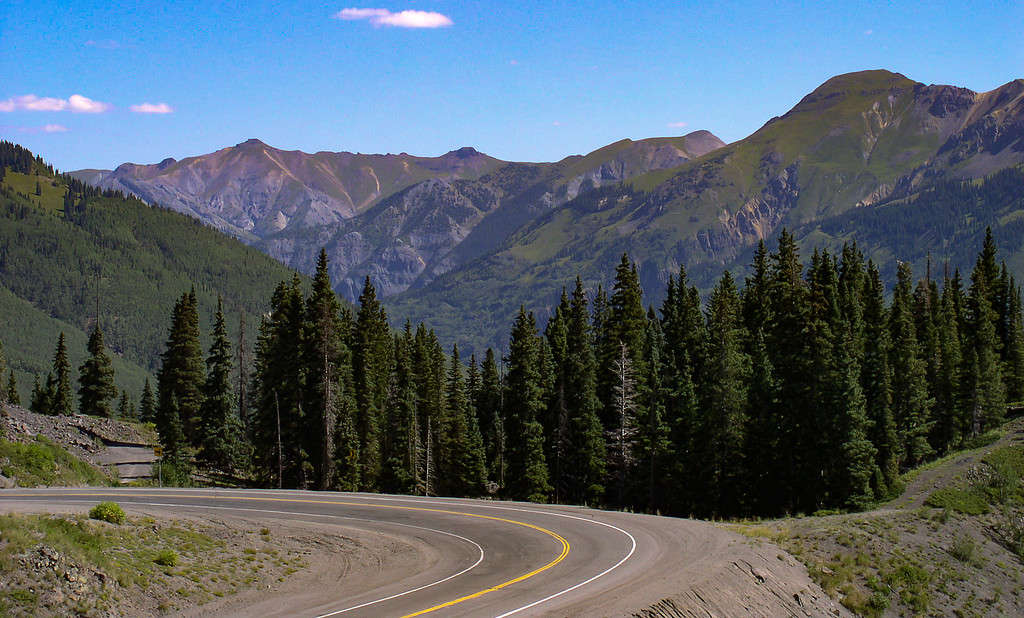
There are million-dollar views on the Million Dollar Highway!
©iStock.com/Tracy Keeney
How Long Does it Take to Ride the Million Dollar Highway?
A non-stop drive of the entire 25-mile stretch of the Million Dollar Highway takes roughly 40-45 minutes. However, travelers can spend the better part of the day or even multiple days traveling on this road. The scenery and the surrounding towns invite exploration.
The entire San Juan Skyway takes between five and six hours to drive.
A non-stop end-to-end drive on Route 550 from Bernalillo, New Mexico, to Montrose, Colorado, will take nearly six hours.
Why Are There No Guardrails on the Million Dollar Highway?
With all the improvements made to this road, it would be reasonable to assume guardrails would protect the steepest, most dangerous sections. That is not the case. While there are some protective barriers along certain parts of the road, many of the most dangerous stretches offer no protection from the steep dropoffs.
There are old pictures of large rocks that were placed to protect drivers from the road’s steep dropoffs, but those rocks were removed long ago. With newly developed snow-clearing technology, Colorado was able to keep the road open year-round for the first time in 1935. However, that is also why some sections of the Million Dollar Road have no safety barriers.
Guardrails would prevent snow removal. Parts of the Million Dollar Highway see 250-300 inches of snow per year. Plow drivers must be able to remove that snow from the road, but guardrails would prevent the snow from being pushed over the edge of the road’s more narrow sections. If there were safety barriers in these areas, the snow would pile up, and the road would quickly become impassable.
Some sections of the road feature guardrails, but only those wide enough to allow for adequate winter maintenance. The rest of the road has no safety barriers of any kind.
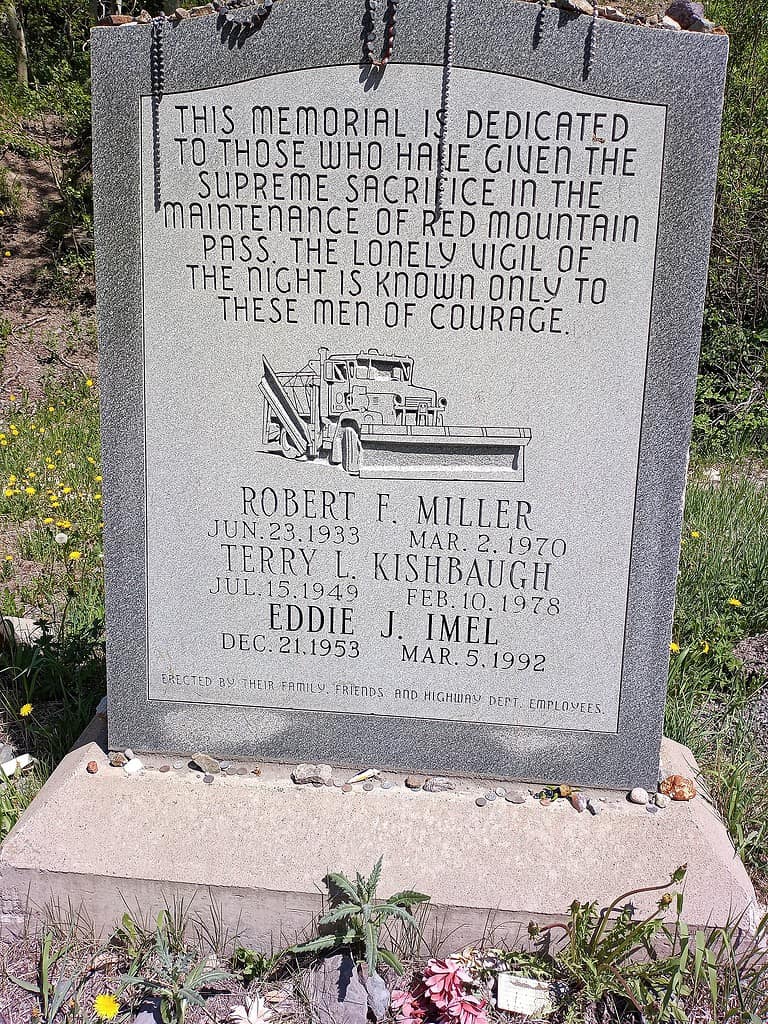
There is a memorial along the Million Dollar Highway honoring snow plow operators who perished while clearing the road.
Is the Million Dollar Highway Safe?
There are about 40 accidents on the road each year, resulting in an average of seven fatalities. The road features steep dropoffs, hairpin turns, and, as just discussed, a few guardrails.
This is not a road for new or nervous drivers. There have been reports of some drivers who stopped on the road, refusing to drive another inch due to fear.
Most of the Million Dollar Highway accidents result from fast, careless driving in poor weather conditions. The road is open year-round, but conditions in the mountains can deteriorate rapidly, especially in the winter.
Experienced drivers who are willing to drive slowly and cautiously and avoid the road when conditions are the worst can navigate the Million Dollar Highway safely. The speed limit ranges from 15 mph to 25 mph on the highway. Many of the turns have posted speed limits of 10 mph.
It should be noted that RVs and 18-wheelers travel this road safely. When drivers take the proper precautions, the road can be safe.
Despite some reports, accident statistics reveal this road is not one of the most dangerous roads in the world. It’s really not even close.
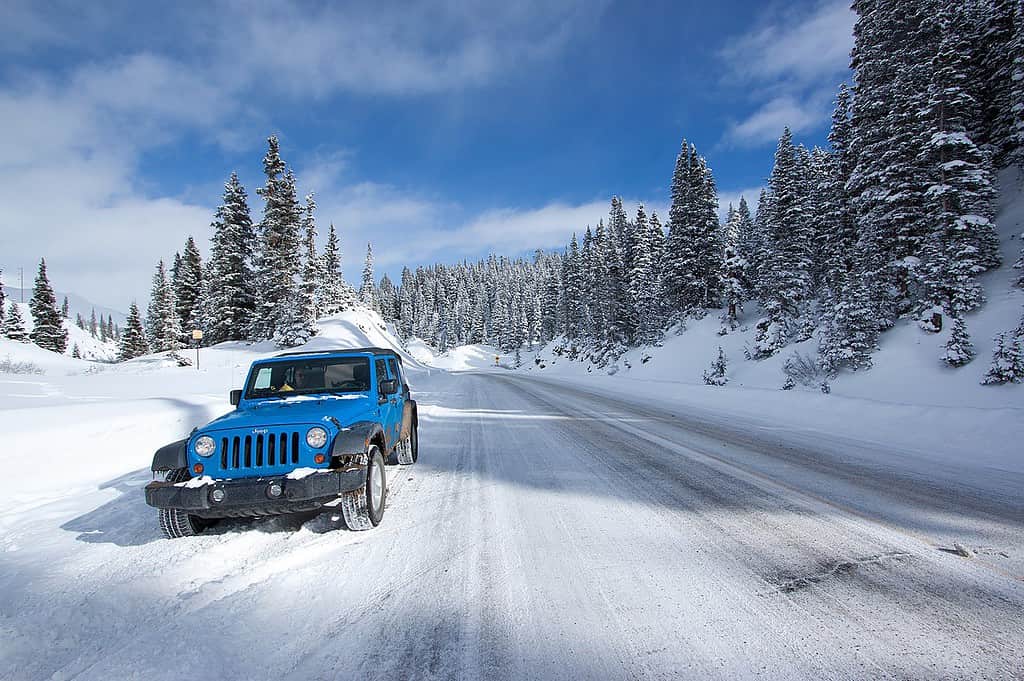
Winter on the Million Dollar Highway is no joke!
©Alan Stark from Goodyear, AZ, United States / CC BY-SA 2.0 – Original / License
Safety Tips
Here are a few safety tips to ensure you can traverse the Million Dollar Highway safely.
- Make sure your tires and brakes are in good shape. They will be your most important safety features on the road.
- Don’t ride your brakes on steep descents. Shift into a lower gear and let your transmission do some of the work to hold you back. This will help keep your brakes from overheating.
- Check the forecast. If it is going to be snowy or icy, it’s best to stay off the road unless absolutely necessary. Locals who use this road during the winter often use snow chains to increase traction.
- Watch your speed. The speed limits on this road are low for a reason. Most accidents on the Million Dollar Highway, including those that result in fatalities, are speed-related.
- Keep your eyes on the road. Ignore all your phone notifications. Let one of your passengers manage the road-trip playlist. It’s also tempting for the driver to admire the views, but don’t do it. That’s a luxury reserved only for passengers. Taking your eyes off the road for a split second can invite tragedy on the Million Dollar Highway.
- New drivers are a nope. It was said earlier, but it bears repeating. This is not a drive for new or nervous drivers.
What Is the Scariest Section of the Million Dollar Highway?
The stretch through the Uncompahgre Gorge just south of Ouray is the most dangerous part of the road. There is no guardrail, and the dropoff is steep. It can be an especially nervy drive in bad weather. It is also a bit of a white-knuckle stretch for RVers or those who are towing a large trailer. Still, if experienced drivers take it slow and drive defensively, it is safe.
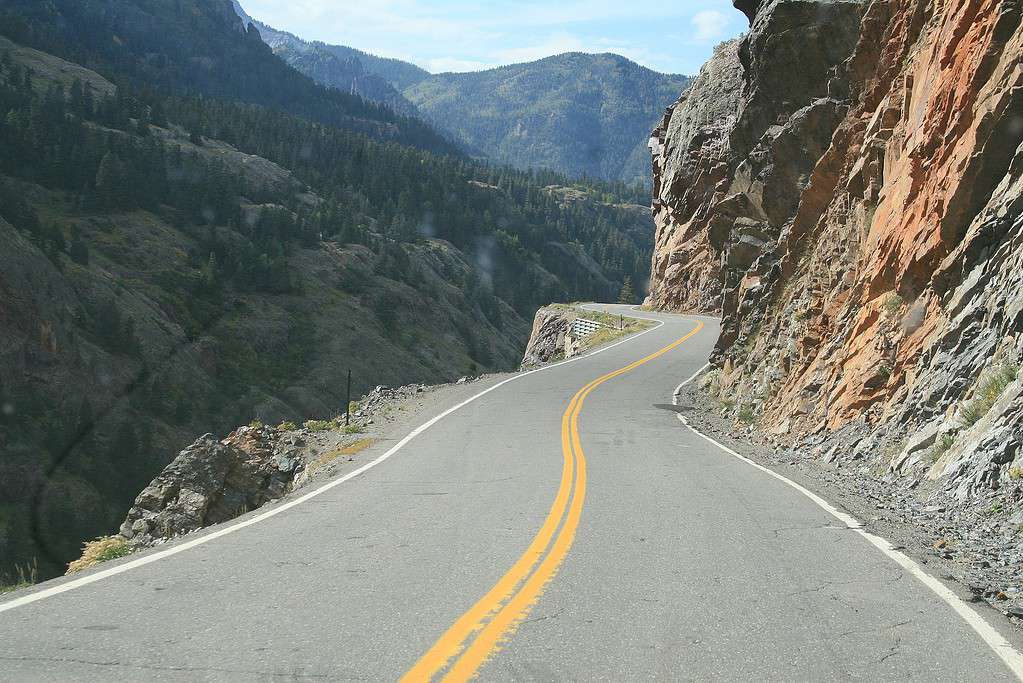
Uncompahgre Gorge is the most daunting stretch of the Million Dollar Highway.
Is the Million Dollar Highway Worth It?
The Million Dollar Highway has a long, storied history. It was the road that many swore could never be built. Today, the road features some of the most outstanding mountain scenery anywhere in the United States. There is so much to do on the highway and in other nearby locations.
Hiking
There are numerous hiking trails off of the highway. Most of these hikes are rated as moderate to difficult due to the rugged terrain.
Red Mountain Pass
The highest point on the road is 11,018 feet at the peak of Red Mountain Pass. When was the last time you drove over two miles above sea level? You can do it on the Million Dollar Highway. It is one of the highest paved roads anywhere in North America.
Off-Roading
While traveling, this road is an adventure in itself. There are also opportunities for some awesome off-roading. ATVs and four-wheel-drive vehicles are required to tackle this terrain.
Ghost Towns
There are abandoned mining towns that travelers can explore. These towns are a reminder of the nineteenth-century mining boom in the Red Mountain District. It’s the whole reason this road was built in the first place.
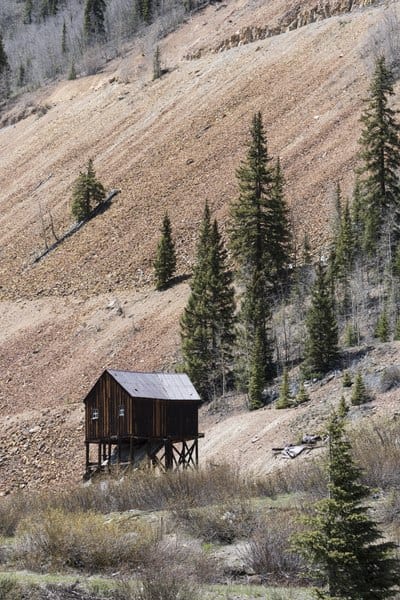
Remnants of old mining operations still sit along the Million Dollar Highway.
Hot Springs
There are hot springs to enjoy in Ouray and other towns around the Million Dollar Highway. There is also an unmarked natural hot spring on the highway itself, but it is unmarked. You may have to talk with locals if you want to find it.
Nearby Towns
The towns near the Million Dollar Highway are a getaway all their own. Durango is the largest city near the highway. It features museums, shopping, restaurants, and exciting nightlife. The small towns of Ouray and Silverton, which bookend the Million Dollar Highway, are quaint mountain towns with rich histories and plenty of stuff to do.
National Park
Black Canyon of the Gunnison National Park is less than an hour and a half drive from Ouray. With its roaring river and sheer cliffs, Black Canyon is a natural wonder worth a little extra driving time.
Additional Mountain Passes
Two mountain passes, Coal Bank and Molas, south of Silverton, are true stunners. Just minutes from the Million Dollar Highway, Coal Bank Pass winds through the San Juan National Forest and offers spectacular views and hiking opportunities. Molas Pass is famous for its snowmobiling and backcountry skiing, and snowshoeing during the winter. There are camping, hiking, and mountain biking opportunities, as well.
The Highway Itself
However, even with all these additional destinations, the Million Dollar Highway is a destination itself. The road winds through some of the most breathtaking mountainous terrain you’ll find anywhere. You can almost feel yourself going back in time with the miners who originally used this road. Every picture you take is Instagram-worthy. You may see an eagle soaring overhead or encounter an elk or deer along the road (yet another reason to take it slow!).
Is a trip across the Million Dollar Highway worth it? Most definitely.
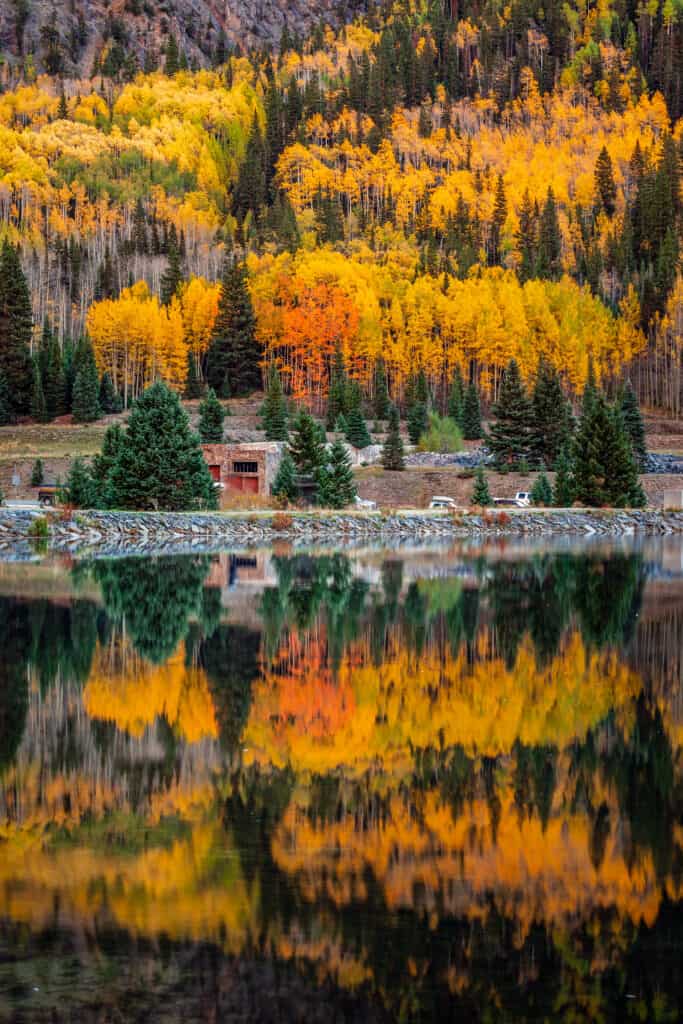
One fall picture on the Million Dollar Highway is worth a million words.
©iStock.com/RuslanKaln
Where is the Million Dollar Highway Located on a Map?
The Million Dollar Highway is located in southwestern Colorado, in the San Juan Mountains, and stretches 25 miles along route U.S. 550 between Silverton and Ouray, Colorado. It is a portion of the San Juan Skyway that goes through the San Juan National Forest, the largest national forest in the United States.
The photo featured at the top of this post is © Mike McBey / CC BY 2.0 – License / Original
Thank you for reading! Have some feedback for us? Contact the AZ Animals editorial team.








